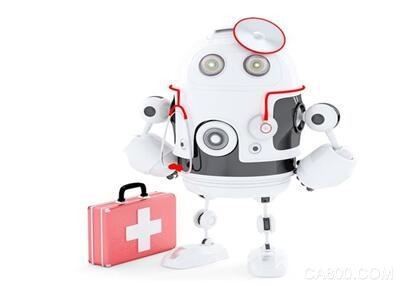In previous electronic manufacturing exhibitions, automation technology represented by robots is undoubtedly the most eye-catching. NEPCON West China 2016, which will open at the New International Convention and Exhibition Center in Chengdu Century City on June 21, will bring together pioneering fields such as automotive, smart hardware, electronics manufacturing automation, smart home, LED, SMT, PCB, and IC. In addition, the “Electronic Manufacturing Automation Exhibition Zone†has been specially added, and it is proposed to invite domestic and foreign automation industry giants to show automation technology equipment represented by robot technology. Leading the electronics manufacturing industry to lean, intelligent, and information-based production models, and continue to lead the industry development trend.
In the manufacturing industry, industrial robots have become an indispensable core equipment, liberating a large amount of labor. But as the speed of industrial robots has gradually tended to stagnate, the development of service robots has become in full swing, and what robots can do is exponentially expanding at an alarming rate.
Among them, medical robots have been widely concerned. According to some data, the future market size of surgical robots will increase from 3.2 billion U.S. dollars in 2014 to 20 billion U.S. dollars in 2021, with an average annual compound growth rate of 29.9%. The size of the rehabilitation robot market will increase from US$220 million in 2014 to 2021. The US$3.2 billion, with an average annual compound growth rate of 46.6%. It can be seen that the potential of medical robots is a blue ocean in the field of service robots, and it is expected to become the next vent.

It is generally believed that medical robots are high-end, intelligent medical device products that can be used in the fields of surgery, medical training, rehabilitation, and assistive devices for the disabled. Therefore, medical robots are divided into auxiliary surgery robots, medical and surgical robots, rehabilitation robots and other medical robots.
The advantages of medical robots are still obvious. The first is the ability to perform high-precision, high-strength tools, which is a powerful advantage unmatched by manpower. Secondly, the medical robot greatly enhances the safety of the operation, and only needs to execute the command input by the doctor to reduce the probability of the accident. Finally, medical robots can also reduce the difficulty of surgery to a certain extent.
Medical robots are highly competitive in Europe and the United States, with a high degree of marketization. Therefore, in the global medical robot industry, medical robot companies in Europe and the United States occupy the majority of the market share, accounting for more than 70% of the total, in a dominant position. However, the focus of the market will gradually shift to the Asian region, especially the Chinese market.
Coarse grain usually refers to rice, wheat, corn, soybean and potato five crops other than the grain and bean crops. The main are: sorghum, millet, buckwheat (sweet buckwheat, buckwheat), oats (naked oats), barley, millet, barley millet, barley millet, grain amaranth and beans (kidney beans), mung beans, adzuki beans (adzuki beans, adzuki beans), broad beans, peas, cowpea, lentils (soldier beans), black beans and so on. It is characterized by short growing period, small planting area, special planting area, low yield, and generally contain rich nutrients. The ancient Chinese medicine book "Huangdi Neijing" records that "five grains are for raising, five fruits are for helping, five livestock are for benefiting, and five vegetables are for filling". Some trace elements, such as iron, magnesium, zinc and selenium, are more abundant in coarse grains than in refined grains. The value of these trace elements to human health is considerable. Coarse grains are also richer in potassium, calcium, vitamin E, folic acid and bioflavonoids than refined grains.
Whole Grains are rich in nutrients. Oats, for example, are rich in protein; Millet is rich in tryptophan and carotene. Beans are high in quality protein; Sorghum is rich in fatty acids and iron; Tubers contain carotene and vitamin C. In addition, coarse grain still has the effect of reducing weight. Such as corn also contains a lot of magnesium, magnesium can strengthen intestinal wall peristalsis, promote the excretion of body waste, is very beneficial to weight loss.
Multigrain Class,Multigrain Loaf,Multigrain Wheat Bread,Multigrain Seeds
XuChang Youjia Food Product Development Co., LTD , https://www.yjgrain.com